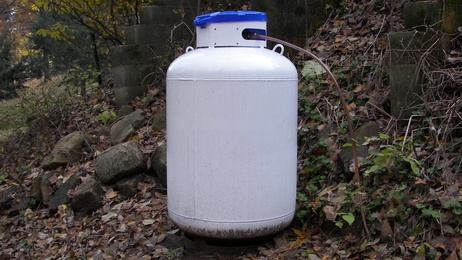
As an alternative fuel, propane has proven better than most as a viable substitute for both gasoline and diesel. Propane injection is generally simpler and more reliable than gasoline or diesel, burns cleaner, offers lower coolant temperatures and has a very high octane level (about 110). While propane injection has its limitations, it remains the fuel of choice for many large fleet operations.
Engines utilizing multi-point fuel injection, as most modern powerplants do, have intake manifolds designed to flow nothing but air. Older manifold designs such as those intended for carbureted or throttle-body injection, generally don't contain the very long and oddly-angled runners found on multi-point manifolds, angles which can easily cause fuel separation and lead to backfiring as the throttle first opens. The result is a huge torch-like jet of burning propane in the intake-a serious problem if you have a plastic manifold. If you experience backfiring due to propane injection, you can either install a multi-point injection propane setup that keeps fuel out of the manifold or utilize a throttle position switch that ensures the injection unit doesn't kick in until the throttle has opened sufficiently.
If you're building an engine from the ground up with the intention of running propane, you should seriously consider installing higher compression pistons. Because of its very high octane, propane-injected engines can tolerate compression ratios about 1.5 to 2 points higher than those permitted by 93 octane pump gas. Higher compression will increase horsepower and torque throughout the RPM range and enhance both performance and fuel economy. Propane doesn't have the energy density of gasoline, meaning the engine requires more of it to generate the same power. Higher compression will help offset the fuel economy losses inherent to propane injection.
Refilling has always been a problem for propane-injected vehicles; the fuel simply isn't available at every corner gas station. If you want the high octane, clean emissions and engine longevity of propane but don't want to worry about running out of gas in the middle of nowhere, you should consider running propane as a supplement only. Supplemental propane systems are simple, fairly cheap and easy to install and tune (especially on diesel engines). A large enough propane injection system will allow you to tune the engine for gasoline, but switch completely over to propane while cruising.
While propane has a higher octane than gasoline, it has a much lower "flash point." As soon as the propane enters your cylinder, it's not going to wait around to burn. While this isn't necessarily a bad thing for performance, it means you generally can't use aftermarket performance chips with propane injection. Performance chips advance timing to the outer limits of what gasoline can handle, which far exceeds the safety limit for propane. You might even need to retard timing slightly to prevent "knock" and detonation.